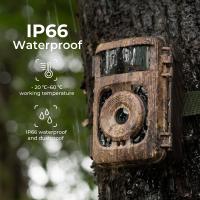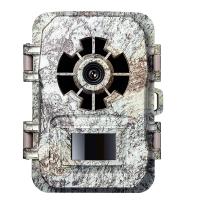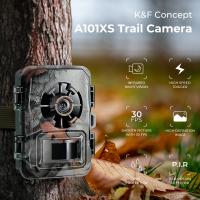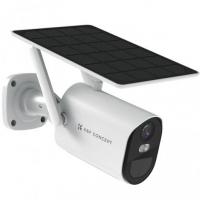Can You Track A Cellular Trail Camera?
The advent of trail cameras has been a significant boon for hunters, wildlife enthusiasts, and security professionals. These devices have evolved from simple motion-triggered cameras to sophisticated cellular trail cameras that can send images and video directly to your smartphone or computer in real-time. The question that arises frequently is whether one can track a cellular trail camera. This article will delve into the nuances of tracking cellular trail cameras, the technology behind it, common user intentions, and practical solutions to real-world problems associated with this technology.
Understanding Cellular Trail Cameras

Cellular trail cameras operate similarly to traditional trail cameras but are equipped with cellular capabilities. These devices capture images and videos when triggered by motion or a timer, and they transmit this data through cellular networks to designated devices. The significant advantage is the ability to receive real-time updates without needing to physically retrieve the camera's SD card.
Possible Reasons for Tracking a Cellular Trail Camera
Users generally have varied reasons for wanting to track their cellular trail cameras. Here are the most common user intentions:
1. Device Recovery: Often, users worry about their trail cameras being stolen or lost. Being able to track the camera can help promptly retrieve it.
2. Performance Monitoring: Ensuring that the camera is in the perfect spot requires monitoring its location and performance.
3. Security Assurance: In some cases, users deploy these cameras for surveillance and might need to track their placement through geolocation to ensure comprehensive coverage.
4. Maintenance Check: Knowing the precise location aids in routine maintenance efforts such as battery replacement and checking on potential damage.
The Technology Behind Tracking
Tracking a cellular trail camera can be challenging since these devices are primarily designed for sending pictures and videos over a cellular network, not for continuous GPS tracking. However, some advanced models do offer GPS tagging capabilities. Here’s a brief summary of technologies that can aid in tracking:
1. GPS-Enabled Cameras: Some high-end cellular trail cameras come with built-in GPS modules that geotag every captured image or video. This allows users to know the exact location where the activity was detected.
2. Cellular Triangulation: In the absence of a GPS module, cellular network triangulation techniques can sometimes be used to approximate the location of the camera, based on the signal strength from nearby cell towers.
3. Software Solutions: Third-party tracking apps or cloud services provided by the camera manufacturer can offer ways to locate the camera, although these solutions may not work universally across all models.
Practical Solutions
Here, we outline practical solutions for tracking your cellular trail camera based on different scenarios:
Scenario 1: Recovering a Lost or Stolen Camera
If your intent is to recover a lost or stolen trail camera, investing in a GPS-enabled model is the most straightforward solution. These cameras can provide precise location data that can be monitored via a mobile app. In some cases, manufacturers provide the ability to lock the camera remotely or send an alert if the device is moved from its original location.
Another practical tip is to mark the camera with some form of identification like a label or a unique code. This simple step can deter theft or help reclaim the camera if it's found by someone else.
Scenario 2: Monitoring Camera Performance
If your intention is to monitor the performance and optimal placement of your camera, a GPS-enabled camera can help you track the exact location where most activities are captured. By analyzing the geotagged images over time, you can relocate the camera to high-activity zones.
For cameras without GPS, using robust weather-resistant tags or labels indicating the camera number, date of placement, and other parameters can help in maintaining effective monitoring.
Scenario 3: Ensuring Security Coverage
When deploying cellular trail cameras for security purposes, using multiple cameras with overlapping fields of view and setting them to send immediate alerts can provide better surveillance. GPS-enabled models can enhance surveillance by providing precise locations of intrusions and enabling quicker responses.
You could also use dedicated surveillance software that incorporates a mapping feature to visualize the field of view of each camera, providing a structured security plan.
Scenario 4: Routine Maintenance Checks
Routine maintenance of trail cameras usually involves tasks like battery replacement, SD card swaps, and ensuring the device is operational. For maintenance purposes, knowing the exact location is crucial. Again, GPS-enabled cameras can facilitate this, saving time and effort spent in locating numerous cameras in a large area.
If purchasing GPS-enabled cameras is not feasible, keeping a detailed log or map of each camera's placement can be very beneficial. Regularly updating the log with coordinates or landmarks helps you quickly locate the cameras when maintenance is due.
The ability to track cellular trail cameras considerably enhances their utility, providing peace of mind regarding theft, ensuring optimized placement for capturing activities, improving security surveillance, and easing the process of routine maintenance. While not all cellular trail cameras come equipped with GPS technology, those that do offer significant advantages for tracking and monitoring.
For scenarios where GPS-enabled cameras are not a viable option, there are still practical steps one can take, such as detailed logging and the use of weather-resistant tags for easy identification. As technology continues to evolve, the capabilities of cellular trail cameras will likely expand, making them an even more indispensable tool for wildlife enthusiasts, security personnel, and anyone interested in remote monitoring and surveillance.




































There are no comments for this blog.